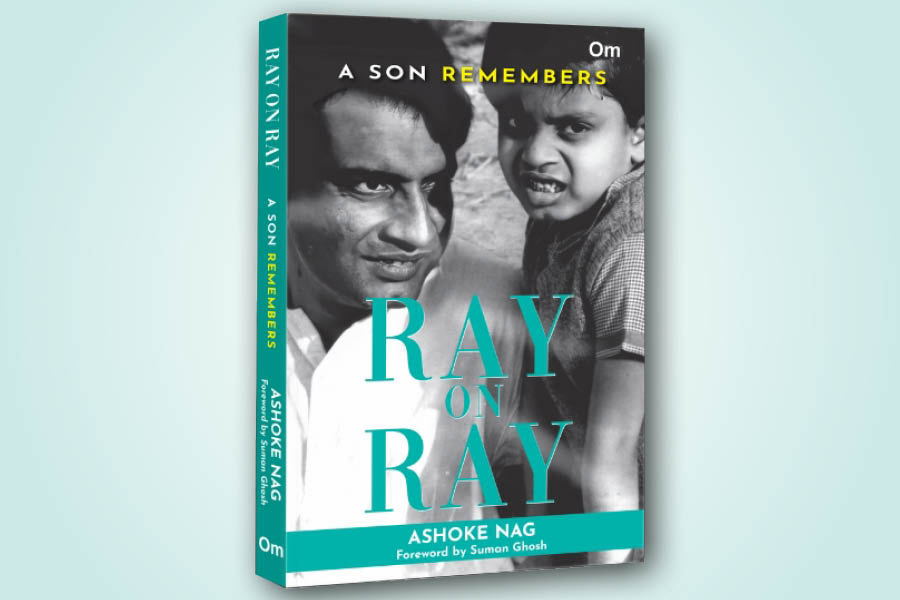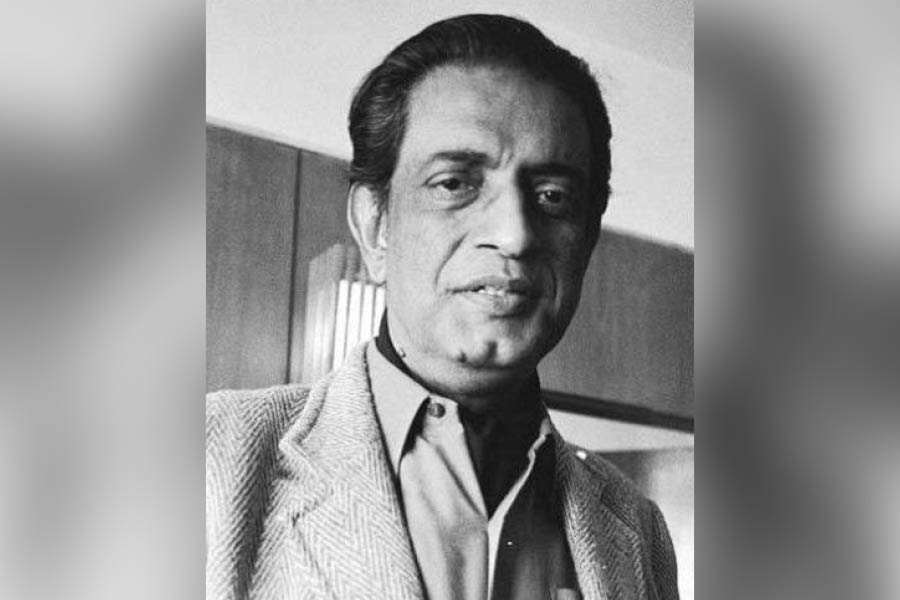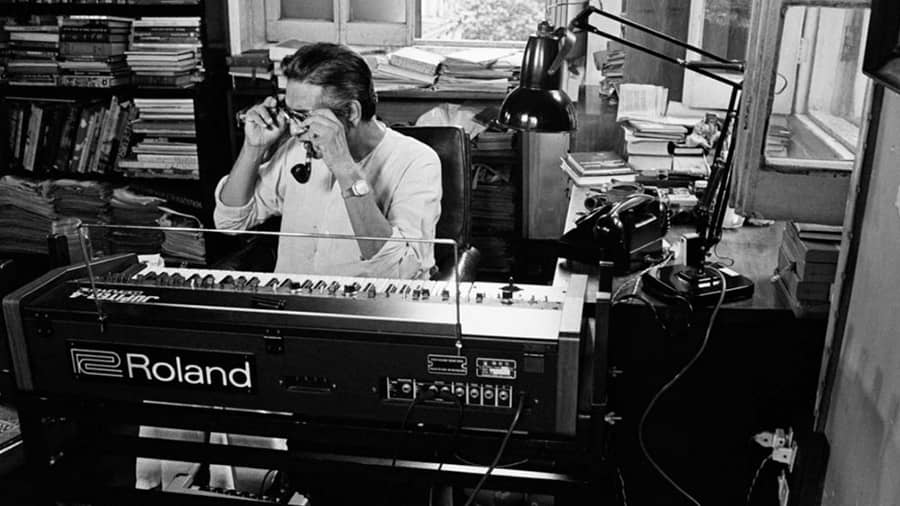Everyone knows Satyajit Ray. We have read his books, watched his films, marvelled at his illustrations and altogether been enthralled by his wide range of work, which promises to have a little something for everyone.
Over the years, Ray’s works have been a subject of debate and discourse in academic circles, mainstream media as well as everyday rowak er adda. Amidst all this, however, one aspect of Ray remains relatively unexplored — who he was as a human being.
Ashoke Nag’s Ray on Ray: A Son Remembers (Om Books International) offers readers a glimpse into this very side of the veteran filmmaker. The book takes a look at Satyajit Ray’s life through the memories of his son, Sandip Ray. Replete with fascinating stories, Ray on Ray uncovers the many facets of Ray’s enduring popularity and showcases him in a new light.
The following excerpt is taken from the chapter titled “Ray and Ray: A Unique Father-Son Friendship”.
Ray and Ray: A unique father-son friendship
Ray’s exceptionally subtle nature also shone through the bond that he had with his son from when Sandip was a child. Sandip realised this much later in life when he leafed through his father’s movie scripts to digitise them. In the end, pages of some of the early scripts are doodles of steam locomotives and other quaint sketches.
“I realised far later that those were the moments when I had invaded his study, leading him to put off work for a short while to make amusing sketches for me,” says Sandip with a nostalgic smile. The sketches peep through from early scripts like Aparajito and Parash Pathar.
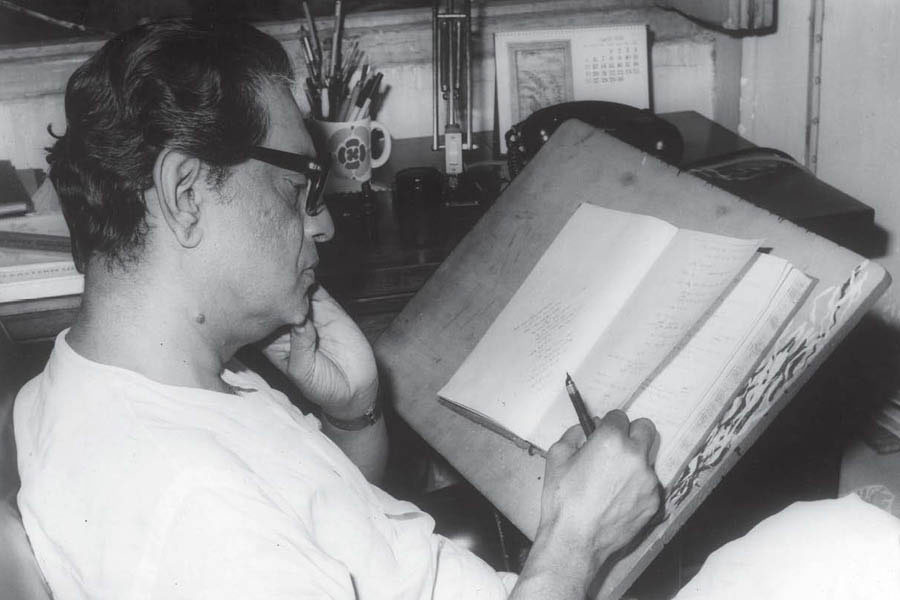
‘The Master at Work’
The shooting of the cocktail sequence in Parash Pathar remains etched in Sandip’s mind. This was in 1958. “Father was up on a crane with his cinematographer, Subrata Mitra, shooting the scene. Since I was very young, everything seemed magnified. The crane was like a huge toy to me and I wished I was up there, too, with Father,” Sandip says with a laugh.
Sandip also recalls Apu’s room in Apur Sansar. He was six years old then. The room was built in the studio on a two-foot elevation to create an element of cinematic depth because of the neighbouring houses. Even two feet was quite a bit for a boy of six. That fascinated Sandip and stuck in his mind. Obviously, at such a young age, Sandip was accompanied by his mother to the studios.
‘Father would smile and wave at me every time I walked into the studio’

Soumitra Chatterjee and Sharmila Tagore in ‘Apur Sansar’
Ray’s son also remembers the day when his mother forbade him from watching Ray shooting the scene of Apu (Soumitra Chatterjee) and Aparna (Sharmila Tagore) after their first wedding night. “It’s for grown-ups,” Bijoya Ray had told Sandip. After Apur Sansar, Sandip used to visit his father’s shootings and music recordings regularly.
“Father would smile and wave at me every time I walked into the studio,” says Sandip. “Going to the studio was like Baby’s Day Out.”
Interestingly, Ray always wanted his wife and son to be with him while shooting. Therefore, he attempted to slot his shooting schedules to coincide with Sandip’s school vacations, be it summer or winter.
Away from filmmaking, Ray’s favourite holiday haunts were the BNR Hotel in Puri and Oberoi Mount Everest in the hills of Darjeeling. Ray would also pen his movie scripts in solitude in these locales and also at the Oberoi Hotel in Gopalpur-on-Sea.
Beginning with films, Sandip’s relationship with his father bloomed further when the family magazine Sandesh was born again and Ray began writing and illustrating for it. “Father’s life as a full-blown illustrator also took off with Sandesh. Signet Press, for which he would also illustrate covers, was, of course, before my time.” Ray would often share story ideas that were germinating in his mind with his son.
Father ‘accepts’ son’s suggestion for ‘Sandesh’
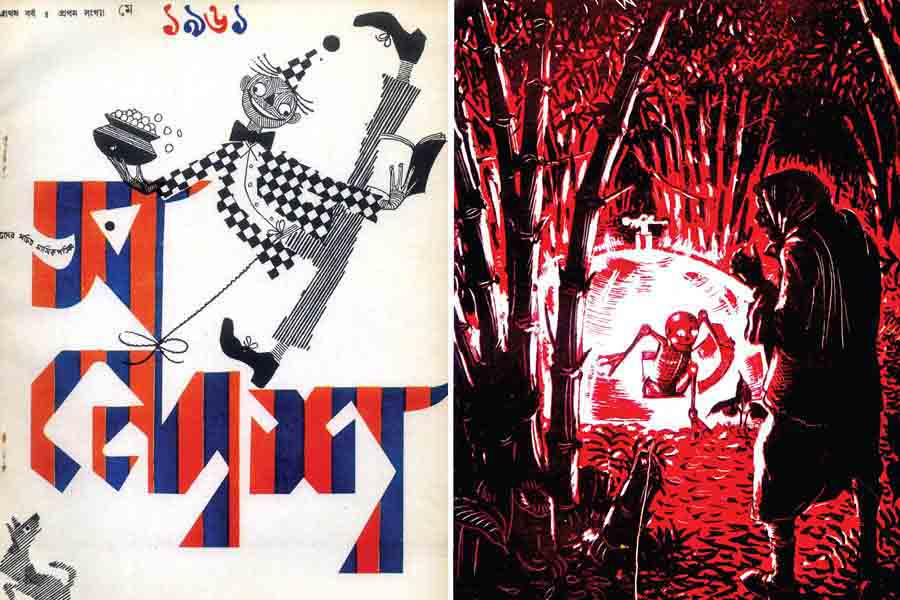
(Left) Revived by Ray in 1961, Sandesh witnessed the birth of Satyajit Ray as a writer for children; (right) Satyajit Ray’s illustration for ‘Bankubabur Bandhu’, Ray’s first short story
“With Sandesh, I discovered my father as a writer. To me, this was his new face. His writings for Amrita Bazar Patrika date back to the ’40s. So Sandesh came as a fresh reward in my life,” says Sandip. When Ray was illustrating his first sci-fi novel, Byomjatrir Diary, revolving around the scientist Professor Shonku, Sandip suggested inserting a rocket in the title logo. Ray took to the idea and incorporated it. On another occasion, Ray ‘accepted’ a subtle change that Sandip ‘dared’ to suggest in the cover illustration of Sandesh. It was around the time Ray’s bestselling sleuth, Feluda, arrived on the scene.
Gradually, Ray began fathoming his son’s inclination towards the making of films. “So if my school was closed on a particular day when Father happened to be going out location-hunting, he would immediately alert me about his plans and inquired if I was keen on accompanying him. I would naturally grab such an opportunity. I remember travelling to all the locales where Goopy Gyne Bagha Byne was shot. But before zeroing on a location where a film would unfold, one had to scour various places with an open mind,” observes Sandip.
The pre-production exercise for Goopy Gyne Bagha Byne, especially picking out locations, was exhaustive. If one dwells just on Rajasthan, Sandip recalls crisscrossing with his father and some unit members across Kota, Bundi, Bharatpur, Jaisalmer, Jaipur, Jodhpur and Pokhran to list a few. “In short, we lapped up Rajasthan in its entirety. And one must factor in the virtual absence of travel guides, not to mention that the internet was in the realms of science fiction in the late ’60s. So the search was that much more painstaking. But all said and done, it was hugely informative and enlightening.”
Interestingly, Sandip mentions that they discovered a hermit in Bharatpur who lived with a pet snake. “Later, Father went on to write a short story, titled “Khagam”, drawing inspiration from this experience. In fact, quite a few of Father’s short stories or novels enjoyed a connect with experiences during crafting a film. His two favourite haunts, as I mentioned, were Puri and Darjeeling. [Ray spent a phase in Lucknow in his childhood.] The first Feluda novella, Feludar Goendagiri (Danger in Darjeeling) is set in Darjeeling. After shooting his documentary Sikkim, he penned the Feluda title, Gangtoke Gongdogol (Trouble in Gangtok). Father’s first original film screenplay, Kanchenjungha, again unfolds in Darjeeling. Many years later, he wrote Hatya Puri (House of Death). Therefore, he would revisit places he had travelled to even as an author, from a different angle, of course,” underlines Sandip. Sonar Kella, again, had emerged from the Jaisalmer that Ray had soaked up while filming Goopy Gyne Bagha Byne, adds Sandip.
*****
Extracted from ‘Ray on Ray: A Son Remembers’, published by Om Books International, 2024.
(Buy the book here.)
